Creative Play: An unexpected Journey into the Unconscious

The Quest for Authenticity
In 2023, I began my master’s dissertation with the goal of discovering my authentic self through art. As a neurodivergent artist, much of my life had been spent masking, navigating a fragmented sense of identity. Jungian psychology offered a way to explore the unconscious layers of my psyche. I believed that if I could find authenticity through my art, I could find it within myself.

Art as a Living Entity
Jung’s idea that an image is a psychic entity, evolving with each encounter, was a life-changing realisation. The artworks I create have their own existence. They are alive, co-creating meaning with each viewer. I don’t own that meaning; each piece is a collaboration between my psyche and the world.
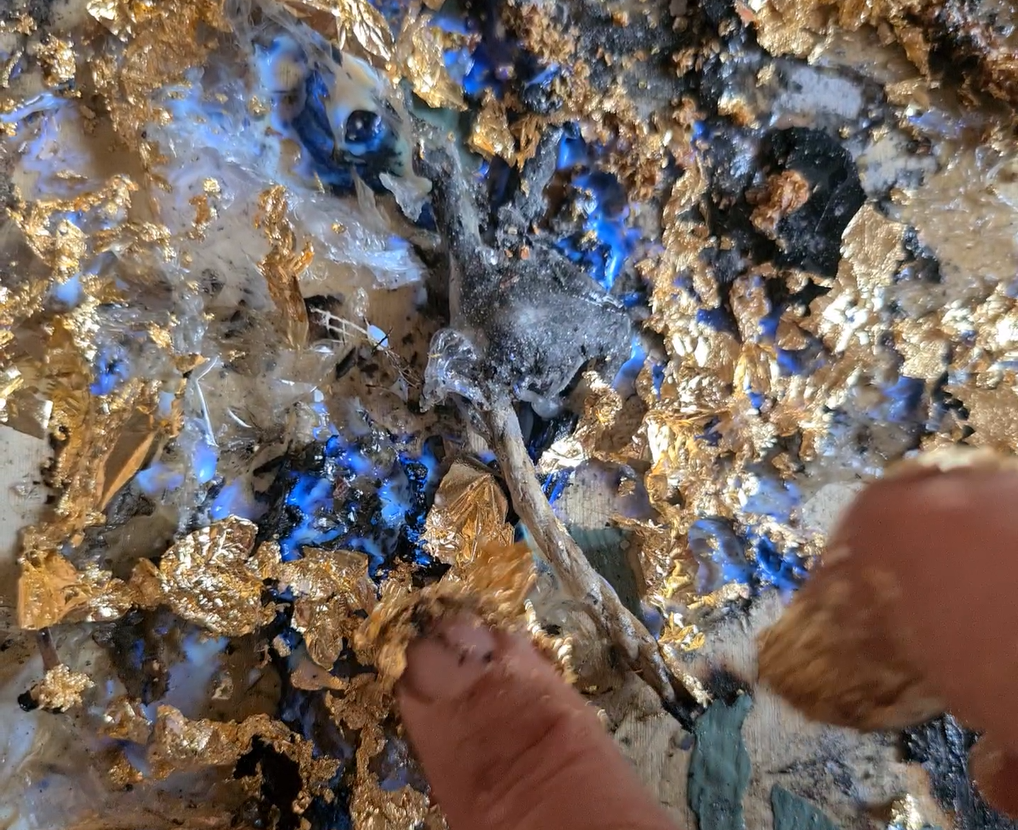
Peeling Back Layers
In autumn 2023, I began my research with painting. The work responded to the natural world around me, continuing from my previous exhibition. However, I noticed a shift. My art became more abstract, as if layers were being peeled back (https://nikkidemarco.com/portfolio/dreamscapes-psyche-nature-in-dialogue/). ‘Creation’, 2023 is an example of this early dissertation work and perhaps the most authentic painting I have created.
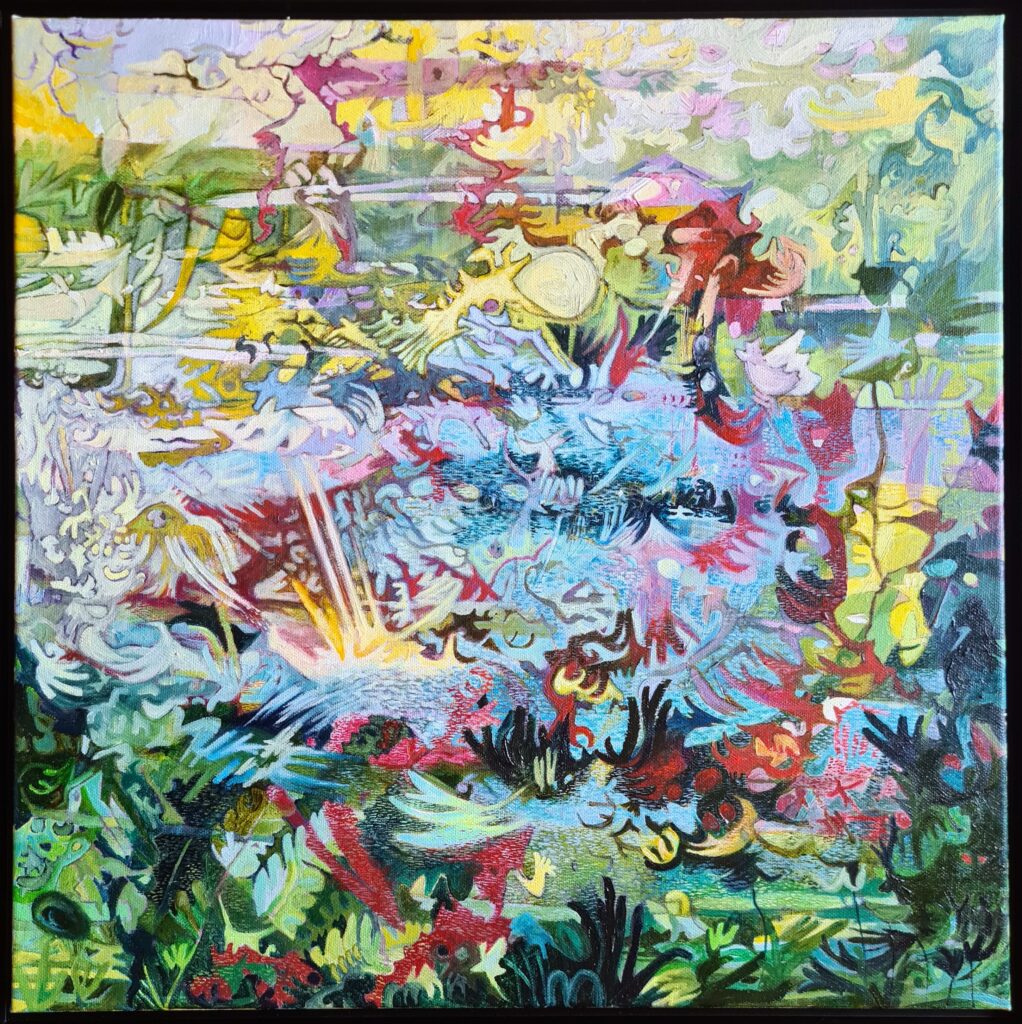
Discovering the Exhibition Space
During a run that autumn, I came across a derelict building on the fjord. I immediately knew this would be the perfect place to exhibit my paintings. By then, I had let go of the idea of a public exhibition, realising it would fuel my ego.
Synchronicities Begin
Around this time, synchronicities started appearing. The first came as I repeatedly listened to The Wisdom of Play podcast. I was struck by Jung’s view on play:
“The creation of something new is not accomplished by the intellect but by the play instinct acting from inner necessity. The creative mind plays with the objects it loves. ”
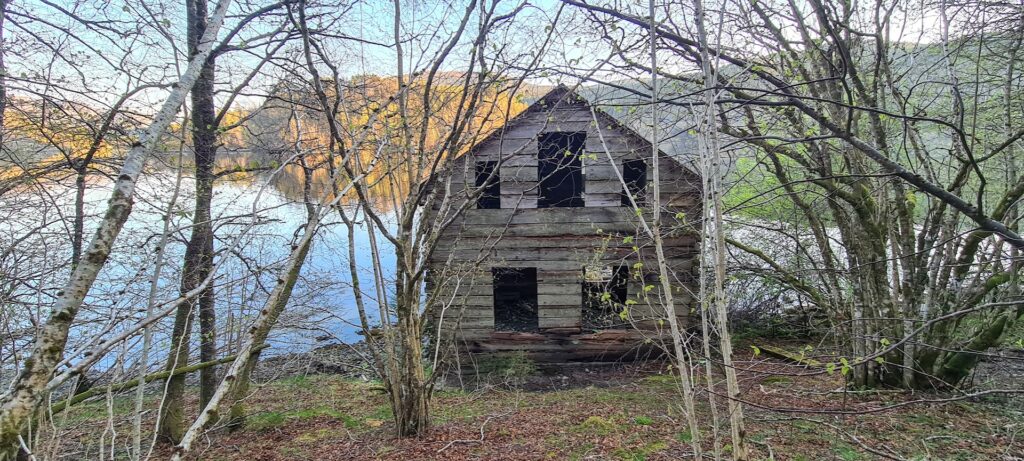

The second synchronicity came when a peer mentioned she makes art every day, something I wasn’t doing. This sparked the idea that daily creative practice could unlock my unconscious.
The third came after a conversation with my course leader, where I opted for the 100% essay route, bypassing the traditional exhibition.
The 30 Day Play Project
The 30 Day Play project was born from these synchronicities. It wasn’t just about making art—it became a way of connecting with the unconscious. Each day brought new experiences, and I felt my intuition guiding the process. However, it wasn’t without challenges. A dark period in the middle of the project took me by surprise. I hadn’t expected to invite the shadow into my creative space, and I wasn’t fully prepared for it. This emotional intensity spoke to the authenticity of the work during that time.

The Derelict Building’s Role
After completing the 30 days, I felt an overwhelming urge to exhibit the works in the derelict building. Initially, I resisted—I was exhausted. But the next day, the pull was even stronger. I gathered the works and drove to the site in the rain, waiting for the weather to clear.
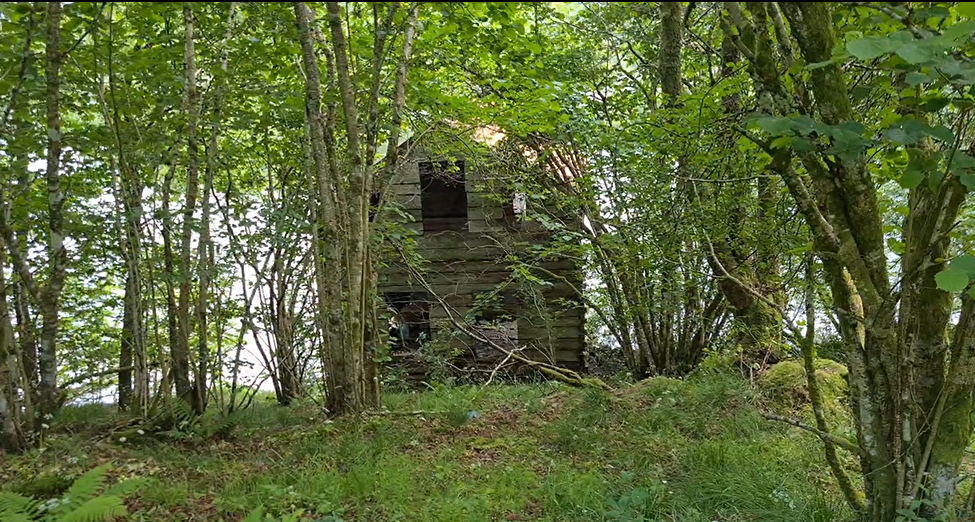
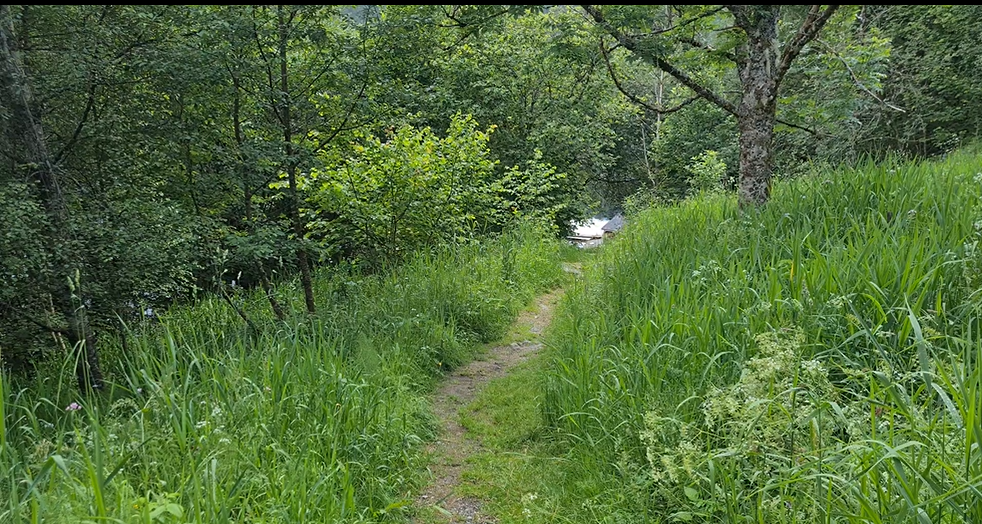
As I walked down the path, arms full of the works I had gathered, the rain stopped and the sun began to shine. I spent no more than an hour hanging the pieces. There was no plan, no order—each work seemed to find its own place. I didn’t bring all the works, and some didn’t want to be shown, but those that did found their spot on the worn wooden walls or within the open windows. The result was beautiful: sunlight streamed through the windowless spaces, illuminating the golden spiral, while a gentle breeze brought the hanging pieces to life.
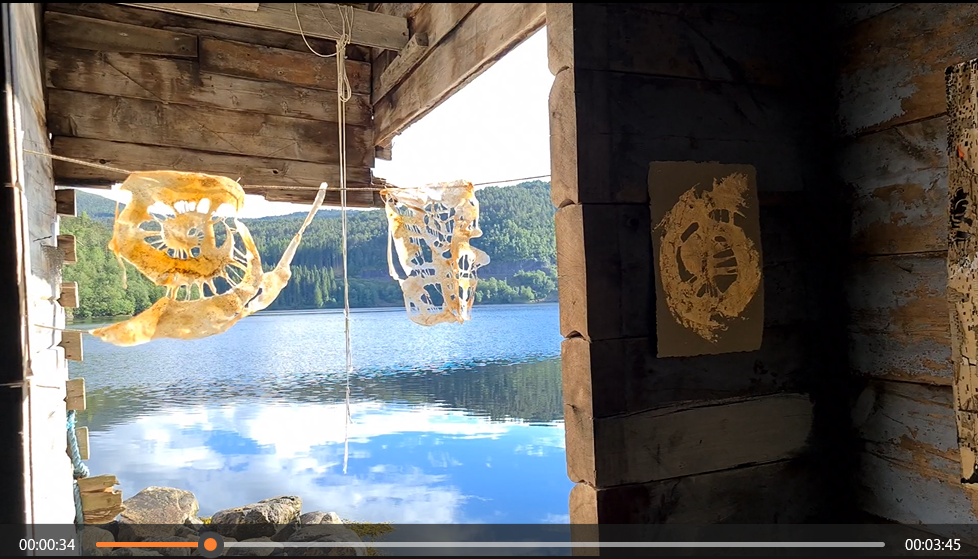
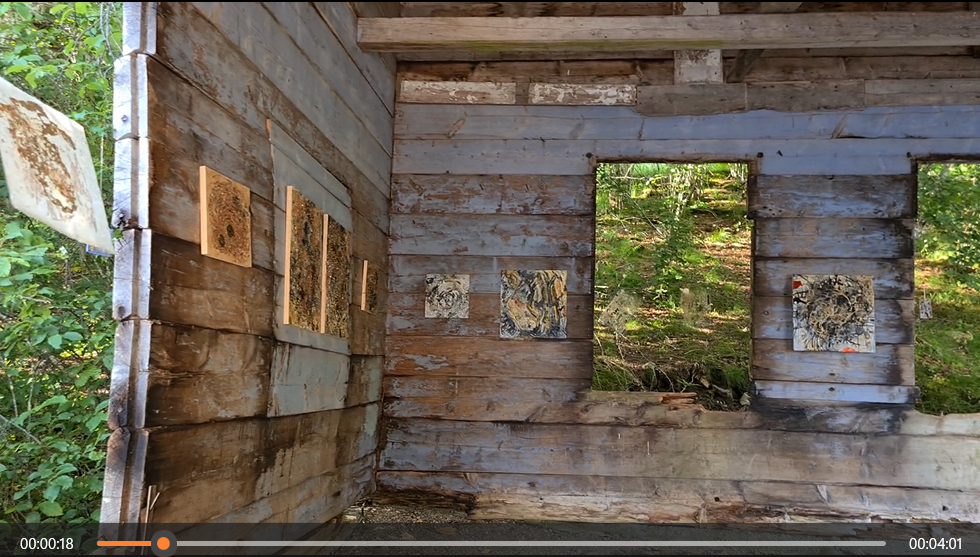
Shifting Energies
Reflecting on the 30 Day Play project, I noticed that each artwork held distinct peaks of energy during its creation and later, during the exhibition. These peaks represented moments when the pieces felt most alive and connected to my unconscious. However, the energy shifted once the works moved from creation to exhibition. Some pieces lost their initial vibrancy, while others came to life in the new environment. This shift raises questions about the fluidity of artistic meaning. The significance of an artwork is not fixed—it evolves with context, environment, and continued engagement.
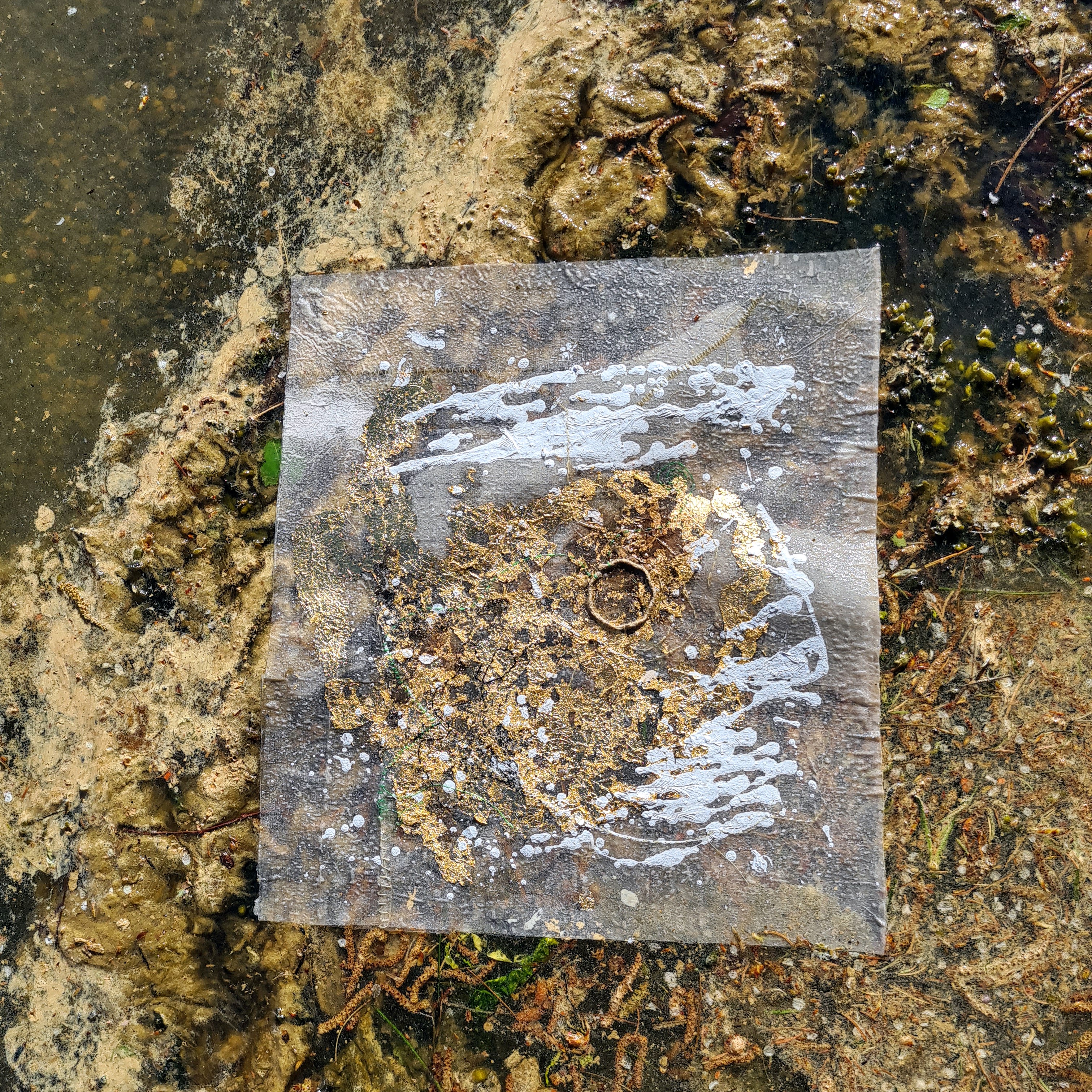

A Journey of Synchronicity, Intuition, and Energy
The 30 Day Play experience was a journey shaped by synchronicity, guided by intuition, and grounded in the materials and embodiment of each piece. Synchronicities opened up unexpected pathways, allowing me to trust the process and let intuition lead the way. The materials I worked with became mediums through which the unconscious expressed itself. The energy of each piece evolved as it moved from creation to exhibition. These five elements—synchronicity, intuition, materials, embodiment, and energy—came together to create an experience where the lines between art, psyche, and the world blurred.